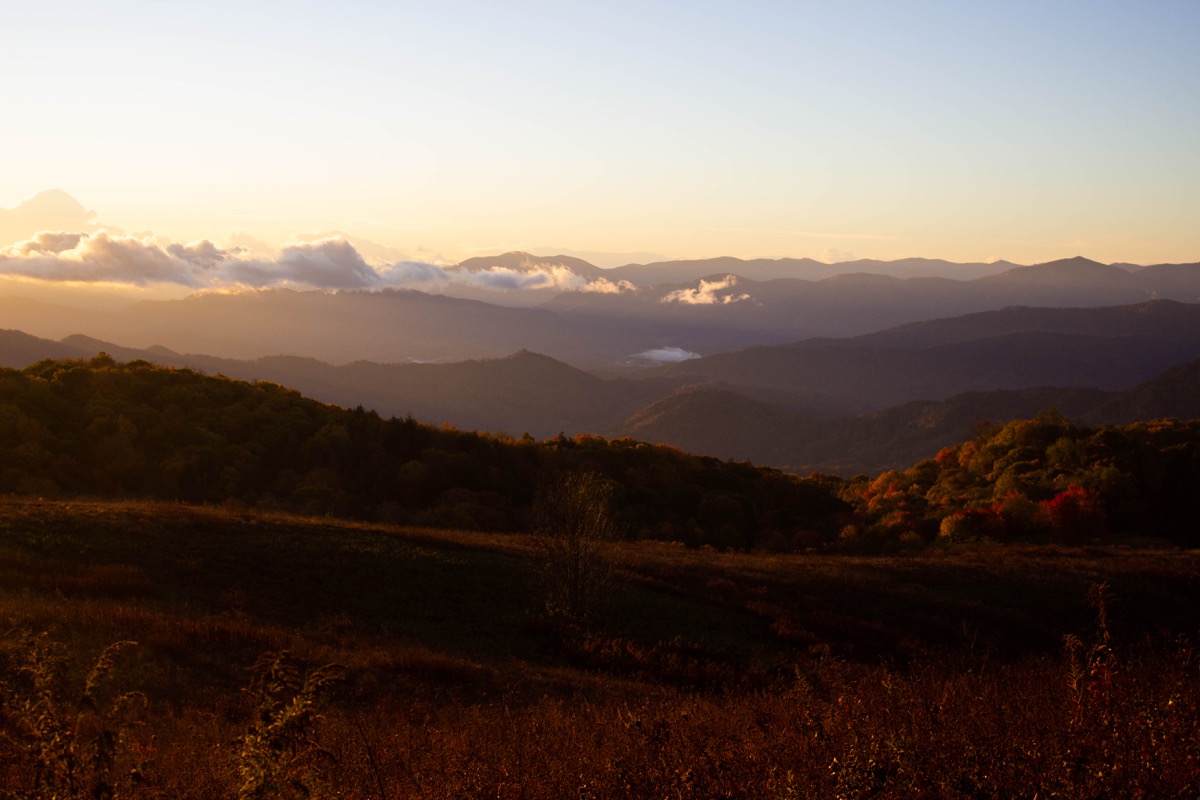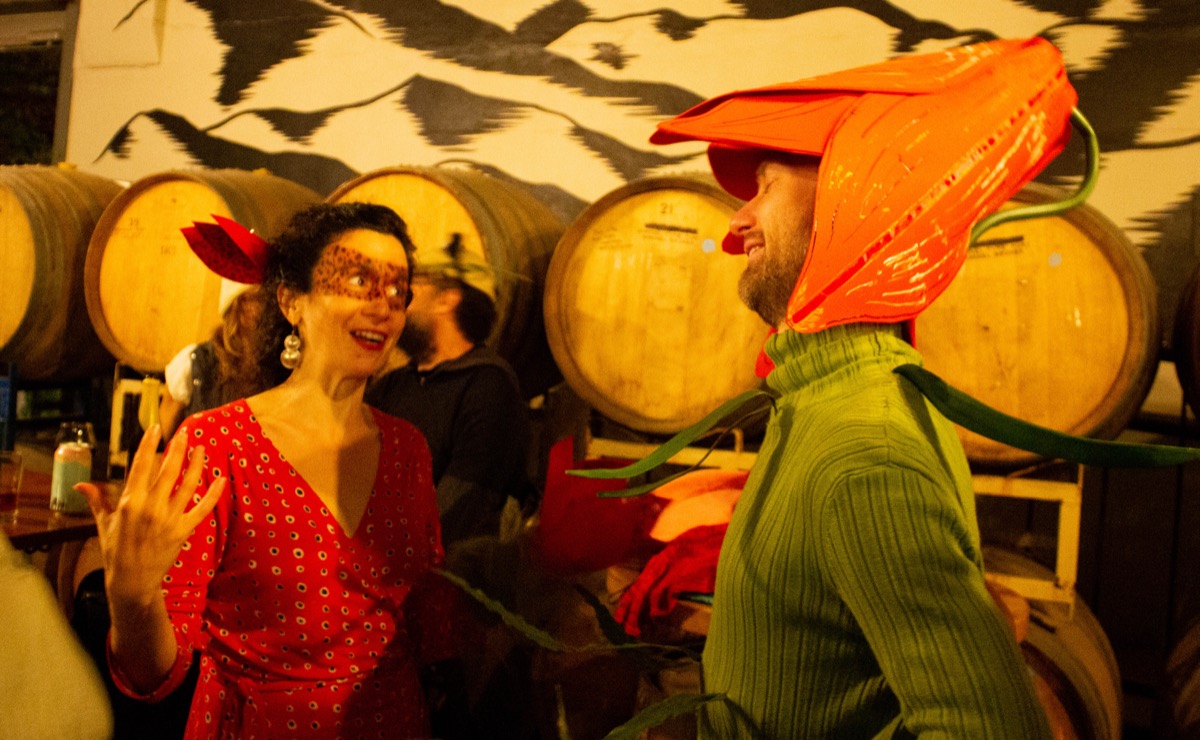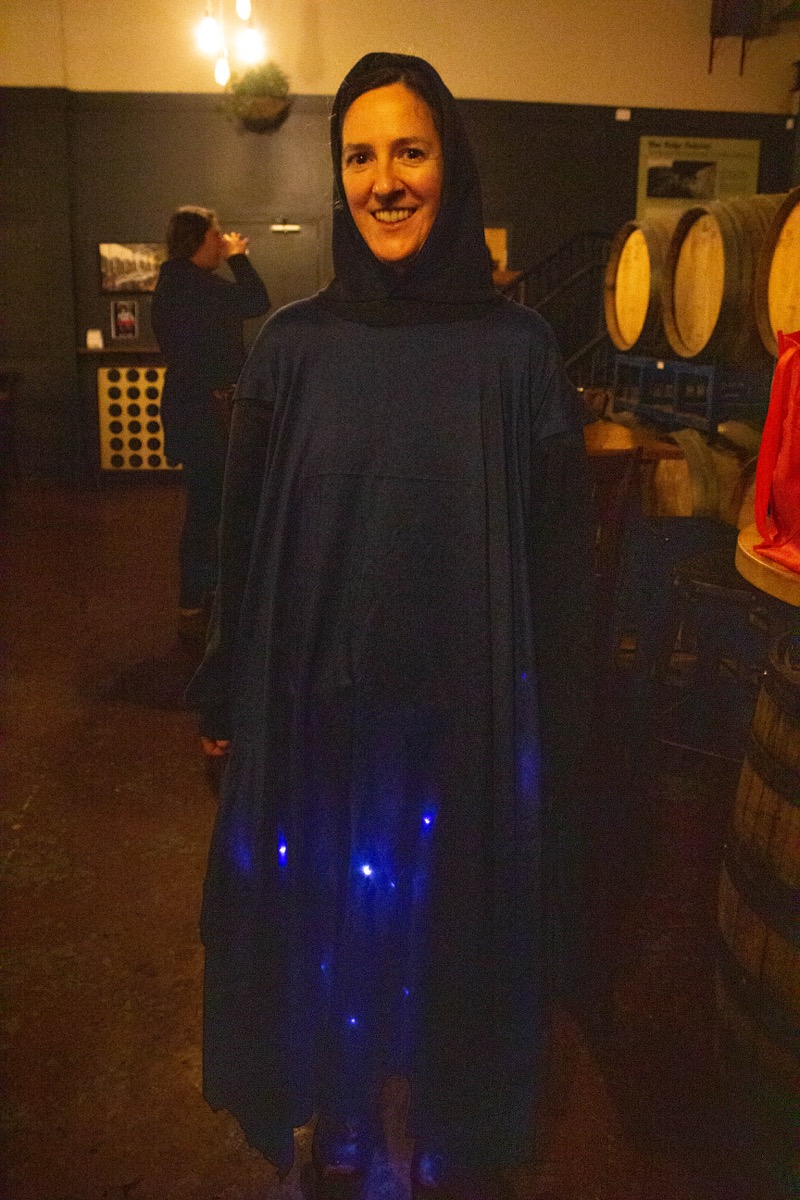The Rare, Native Species Haunting The Appalachian Mountains
While you dressed up as a witch or zombie this Halloween, these North Carolinians took the form of something much scarier: local species at risk.

 It’s the Saturday before Halloween in Asheville, North Carolina, and an elegant chestnut brown snail wanders into a local downtown pub. James Lendemer is dressed as a Mesodon altivagus, commonly known as the “wandering globe” snail—a once common species of the southern Appalachian Mountains that can now only be seen in limited areas of the high misty peaks.
It’s the Saturday before Halloween in Asheville, North Carolina, and an elegant chestnut brown snail wanders into a local downtown pub. James Lendemer is dressed as a Mesodon altivagus, commonly known as the “wandering globe” snail—a once common species of the southern Appalachian Mountains that can now only be seen in limited areas of the high misty peaks.
“This region had some of the highest deposition from acid rain in the whole country,” says James Lendemer, a lichenologist at the New York Botanical Garden who conducts research in the southern Appalachians. The acid fog and rain degrades the snails’ calcium carbonate shells and has caused population numbers to drop, says Lendemer.
Ironically, it’s a rainy, damp evening in downtown Asheville. He takes strips of duct tape to repair the intricate whorl of the cardboard shell strapped to his back as it begins to fall apart.

“The habitat that this snail lives in is bathed in fog, and so just like the snail—which its shell is eaten away by [the] fog—my costume fell apart within the first like five minutes of putting it on here at the pub crawl.”
This past Halloween weekend, the wandering globe snail could have been spotted crawling alongside a parade of rare species endemic to the region. A group of biologists, conservationists, and science supporters embodied species—from the Carolina flying squirrel to Franklin’s crayfish to Appalachian filmy fern—to celebrate the biodiversity of the Blue Ridge Mountains.


“This area is one of the most diverse regions in the United States,” says Josh Kelly, an organizer of the event and a public lands field biologist at the Western North Carolina environmental conservation organization, MountainTrue. “It just really has a high rate of endemism because the mountains we have here, the complex geology, the high rainfall we have.”
Glaciers formed during the Pleistocene Ice Age that ended about 11,000 years ago, but the southern Appalachians remained uncovered, Kelly explains. Species that came close to extinction due to glaciation were able to take shelter in the terrain, and then speciated into their own lineages over time, he says. Now, the region is home to nearly 10,000 species, and is an epicenter of salamander, crayfish, and mussel diversity.
However, this global hotspot of biodiversity has been historically and recently impacted by wildfires, deforestation, pests, and climate change. Threats like sedimentation and chemical pollution have led to the extinction of certain mussels and fish, while plant diseases and non-native insects have nearly eradicated tree species, such as American chestnut and Carolina hemlock.
“You can think of biodiversity as a Jenga tower, where each species is a block in that tower,” says Laura Boggess, a cliff ecologist and professor at Mars Hill University in Mars Hill, North Carolina, who helped create the event, now in its second year. “The tower will keep standing for a while once you lose species, but it’s not as resilient. So when a disturbance comes along—someone bumps the table—if the tower doesn’t have all the blocks, it falls.”

In the part-parade, part-party, the group walked throughout downtown Asheville from pub to pub, spreading awareness of their favorite endemic species at risk. See and hear the stories of some of the Appalachian endemics below!

Amanda Strawderman, program coordinator at Clean Water for North Carolina
Today I am Cladonia appalachensis, which is a reindeer lichen. I just love lichens and I really love the reindeer lichens, so I made myself a crown and there you have it.
First, it’s important to know that lichen is not just one species but a symbiosis of an algae and a fungus, so they’re in their own group. I enjoy studying them because there’s not really a lot of people who know a lot about them, and it’s a nice symbolic species to be able to say that these two different things are cooperating together.

Becky Brown
I am Becky Brown. I am dressed as the blue ghost firefly.
They keep really low to the forest floor. Only the males actually fly around. The females don’t get wings and they don’t fly around, so they just glow in the soil. And they’re just really beautiful and it’s kind of psychedelic to watch.
They are becoming less widespread because they prefer really pristine forest areas, so some of those areas that they prefer are becoming less common.

Ben Nelson, Western North Carolina core field instructor at Muddy Sneakers
My name is Ben Nelson and I am dressed as a Gray’s lily. It’s an absolutely beautiful plant. The colors and the hues in the petals, and if you look into them it just fades from this beautiful golden amber color through ruby reds to crimsons down to purple at the base with spots all over it.
It is especially threatened right now by lily leaf spot disease, which is a fungal pathogen that is affecting a lot of the Gray’s lilies populations, which there aren’t very many of to start with. There are only a few healthy populations of this lily right now.

Gary Kauffman, botanist with the USDA National Forests in North Carolina
I’m a Carolina hemlock, which only occurs primarily in the southern Appalachians.
It’s being affected by woolly adelgids, which is an aphid-like thing that’s causing death. So it has a very narrow range, likes very dry habitats. There’s fewer Carolina hemlocks to begin with, so they’re more restricted. Eastern hemlock occurs all across the eastern U.S. into Canada. But it’s been affected throughout its range.

Greg Kidd, biology professor at Hayward Community College in North Carolina
I am the spruce-fir moss spider, which is an endemic species of tarantula in the Great Smoky Mountains.
I love spiders. I have a tattoo of a spider on my foot and this is a sesame seed-sized tarantula that lives in high elevations in the park.
What’s important is that this species is part of an ecosystem which is very stressed out right now as a result of balsam woolly adelgids that are killing the high elevation trees, as a result of acid deposition up high in the smokies. So the habitat that this tiny little spider lives in is being hammered by all kinds of environmental problems. The problems that it’s facing has been around for years now. It’s an endangered tiny, little spider.

James Lendemer, assistant curator and lichenologist at the New York Botanical Garden
My name is James Lendemer and I am dressed as the wandering globe snail. It’s a species of snail that only lives at the highest elevations in the Smoky Mountains in Great Smoky Mountains National Park, specifically around an amazing area called Clingmans Dome.
And it’s a species that used to be very common a number of years ago, but over time its habitat has been degraded by acid rain and acid fog and logging and the adelgid that killed all the firs. So it’s a species that used to be common and is much rarer now, so it’s really hard to see.
My costume fell apart. I made a beautiful wandering globe snail shell out of cardboard and tape and I took it out and took pictures earlier today, but it started to fall apart because of the humidity and the wetness, which characterizes the whole southern Appalachians. The habitat that this snail lives in is bathed in fog, and so just like the snail—which its shell is eaten away by [the] fog—my costume fell apart within the first like five minutes of putting it on here at the pub crawl. So now as a result, it’s now sitting in the back of someone’s car, and all I have is my name tag and my little eye stocks on a hat.

Laura Boggess, cliff ecologist and professor at Mars Hill University in Mars Hill, North Carolina
I’m Laura Boggess and I am Usnea angulata, which the common name is “fisherman’s dream.” It’s this beautiful, really elegant, long, light green lichen with some poke-y bits kind of sticking out. The reason it’s called Usnea angulata is that it has an angular ridge down the midline of the lichen. It’s the only Usnea that does that. So if you bring your hand lens out in the field and you see one with this angle, you’ve got something special.
This is a very rare species that used to range all up and down the Eastern Seaboard, but has been extirpated. It’s gone locally extinct in a lot of areas because of forest loss and air pollution. It’s one of the old man’s beard lichens, and they look like these long drapey beards that you see all over the place down here. We can feel like we’re in this Usnea rich bubble. But again, it’s disappeared through a lot of a lot of its range.
It’s been an amazing night, and I think that this may be some of the most fruitful sightings of endemic species in the southern Appalachians ever.
Transcripts have been edited for length and clarity.
Invest in quality science journalism by making a donation to Science Friday.
Lauren J. Young was Science Friday’s digital producer. When she’s not shelving books as a library assistant, she’s adding to her impressive Pez dispenser collection.